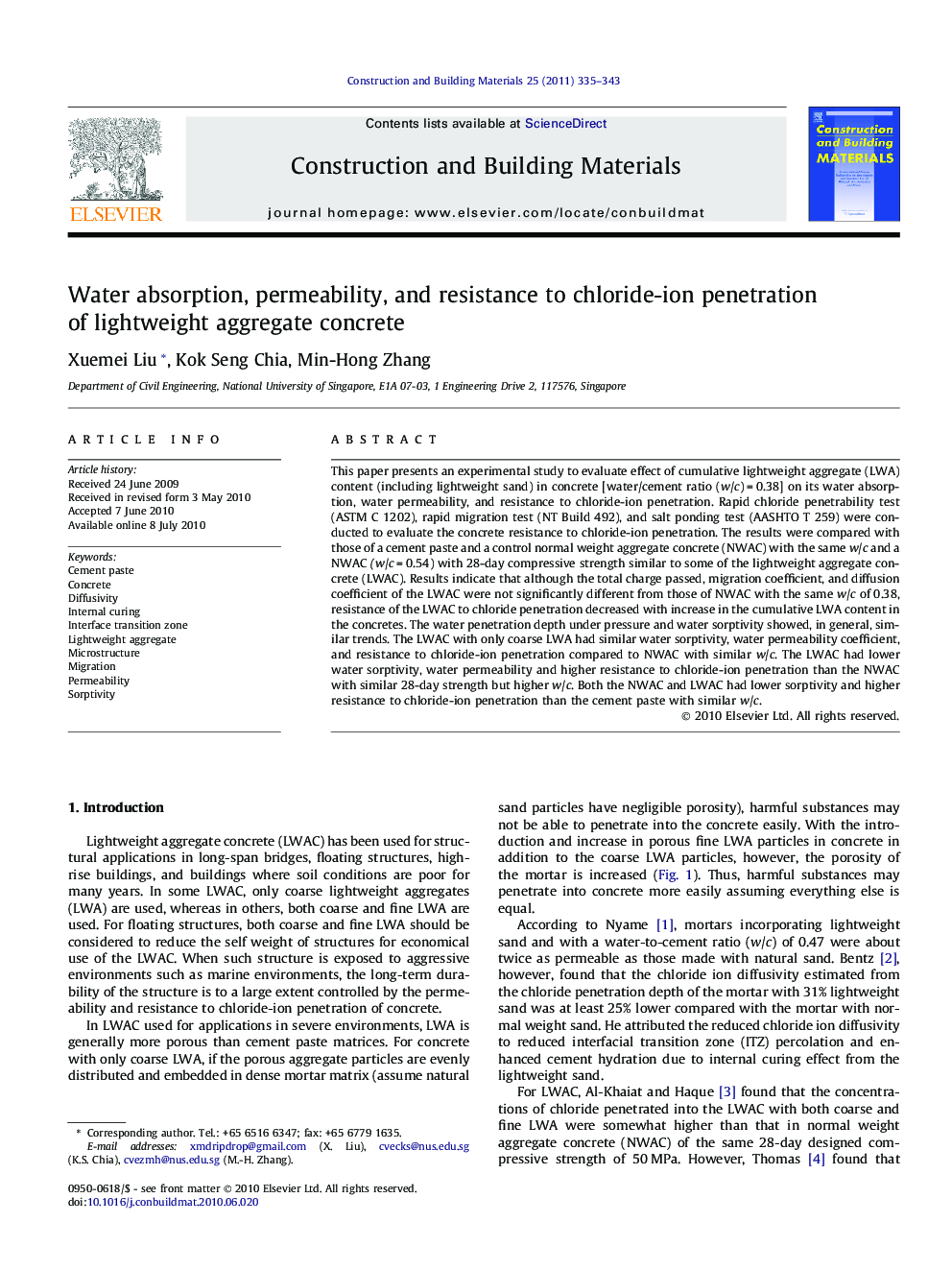| Article ID | Journal | Published Year | Pages | File Type |
|---|---|---|---|---|
| 260238 | Construction and Building Materials | 2011 | 9 Pages |
This paper presents an experimental study to evaluate effect of cumulative lightweight aggregate (LWA) content (including lightweight sand) in concrete [water/cement ratio (w/c) = 0.38] on its water absorption, water permeability, and resistance to chloride-ion penetration. Rapid chloride penetrability test (ASTM C 1202), rapid migration test (NT Build 492), and salt ponding test (AASHTO T 259) were conducted to evaluate the concrete resistance to chloride-ion penetration. The results were compared with those of a cement paste and a control normal weight aggregate concrete (NWAC) with the same w/c and a NWAC (w/c = 0.54) with 28-day compressive strength similar to some of the lightweight aggregate concrete (LWAC). Results indicate that although the total charge passed, migration coefficient, and diffusion coefficient of the LWAC were not significantly different from those of NWAC with the same w/c of 0.38, resistance of the LWAC to chloride penetration decreased with increase in the cumulative LWA content in the concretes. The water penetration depth under pressure and water sorptivity showed, in general, similar trends. The LWAC with only coarse LWA had similar water sorptivity, water permeability coefficient, and resistance to chloride-ion penetration compared to NWAC with similar w/c. The LWAC had lower water sorptivity, water permeability and higher resistance to chloride-ion penetration than the NWAC with similar 28-day strength but higher w/c. Both the NWAC and LWAC had lower sorptivity and higher resistance to chloride-ion penetration than the cement paste with similar w/c.
